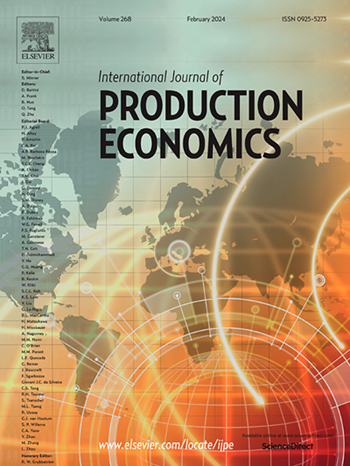The power of Robotic Mobile Fulfilment Systems — A sensitivity analysis
IF 9.8
1区 工程技术
Q1 ENGINEERING, INDUSTRIAL
引用次数: 0
Abstract
The use of mobile robots, particularly the Robotic Mobile Fulfilment System (RMFS), has increased in retail logistics. Especially in e-commerce, which is characterized by high demand fluctuations and diverse product ranges, RMFSs offer advantages. The existing literature suggests that the overall optimization of an RMFS is often challenging due to the system’s complexity and the unknown relationships involved. Therefore, this study extends the previous literature on RMFSs by analysing how the complex interactions between parameters affect the system’s performance. A Design of Experiment framework is used to determine the implicit effects on seven performance indicators. In combination with a sensitivity analysis consisting of various statistical analyses as part of predictive analytics, we confirm previous expectations and statistically demonstrate several heretofore unknown parameter interactions. These consist of two-way interactions of three parameters: The dispersion of stock keeping units (SKUs), average order size, and incoming orders per time interval. Our main contribution lies in identifying key efficiency factors for RMFS’s layouts, particularly highlighting the importance of station arrangement and the significant impact of SKU dispersion on system performance and resource utilization. Furthermore, our comparison of different layouts shows that those with fewer stations can optimize order picker utilization and achieve higher efficiency with fewer resources. Our findings confirm that SKU dispersion is the most influential factor affecting RMFS’s performance. We conclude that RMFS can be effectively applied to various scenarios by following our recommendations on SKU dispersion and layout design.
机器人移动履行系统的力量-敏感性分析
移动机器人,特别是机器人移动履行系统(RMFS)的使用在零售物流中有所增加。尤其是在需求波动大、产品种类繁多的电子商务领域,rmfs提供了优势。现有文献表明,由于系统的复杂性和所涉及的未知关系,RMFS的整体优化通常具有挑战性。因此,本研究通过分析参数之间的复杂相互作用如何影响系统性能,扩展了以往关于rmfs的文献。使用实验设计框架来确定对七个绩效指标的隐性影响。结合由各种统计分析组成的敏感性分析作为预测分析的一部分,我们证实了先前的期望,并统计地证明了几个迄今未知的参数相互作用。它们由三个参数的双向交互组成:库存单位(sku)的分散、平均订单大小和每个时间间隔的传入订单。我们的主要贡献在于确定RMFS布局的关键效率因素,特别是强调站点安排的重要性以及SKU分散对系统性能和资源利用率的重要影响。此外,我们对不同布局的比较表明,工位较少的布局可以优化拣单器的利用率,以更少的资源实现更高的效率。我们的研究结果证实,SKU分散是影响RMFS绩效的最重要因素。我们的结论是,RMFS可以有效地应用于各种场景,按照我们对SKU分散和布局设计的建议。
本文章由计算机程序翻译,如有差异,请以英文原文为准。
求助全文
约1分钟内获得全文
求助全文
来源期刊
CiteScore
21.40
自引率
7.50%
发文量
266
审稿时长
52 days
期刊介绍:
The International Journal of Production Economics focuses on the interface between engineering and management. It covers all aspects of manufacturing and process industries, as well as production in general. The journal is interdisciplinary, considering activities throughout the product life cycle and material flow cycle. It aims to disseminate knowledge for improving industrial practice and strengthening the theoretical base for decision making. The journal serves as a forum for exchanging ideas and presenting new developments in theory and application, combining academic standards with practical value for industrial applications.

 求助内容:
求助内容: 应助结果提醒方式:
应助结果提醒方式:


